#organic printing
Explore tagged Tumblr posts
Text
Organic Printing: The ultimate guide by Vemante
An innovation that is growing with the advancement in technology is organic printing. This groundbreaking technology offers a sustainable and eco-friendly approach to manufacturing
WHAT IS ORGANIC PRINTING?
Organic printing is an amazing technology that utilizes organic materials to create objects. Unlike traditional printing, which depends on plastics and metals, organic printing embraces the power of natural substances such as plant-based polymers and biodegradable materials.
ECO-FRIENDLY MANUFACTURING
One of the most significant advantages of organic printing is its eco-friendliness. By using organic materials, this process reduces the environmental impact associated with traditional manufacturing methods. It promotes sustainability by minimizing waste and lowering the carbon footprint.
FASHION FORWARD WITH ORGANIC PRINTING
It has also made its mark in the fashion industry. Designers are using this technology to craft unique, sustainable clothing and accessories. It allows for the creation of intricate patterns and designs ,opening up endless possibilities for fashion-forward individuals.
A GREENER FUTURE
Using organic materials like bamboo and hemp, builders can create durable and environmentally friendly structures. This not only reduces construction waste but also promotes energy efficiency which is good for the environment.
CONCLUSION
Organic printing is more than just a technological advancement; it's a step toward a greener, more sustainable future. By appreciating the power of natural materials, this innovative technology is making its mark in various industries, from fashion to construction. As we continue to explore the possibilities of organic printing, we move one step closer to a world where innovation and sustainability go hand in hand. So, let's embrace organic printing and make the way for a brighter, eco-friendly tomorrow.
1 note
·
View note
Text


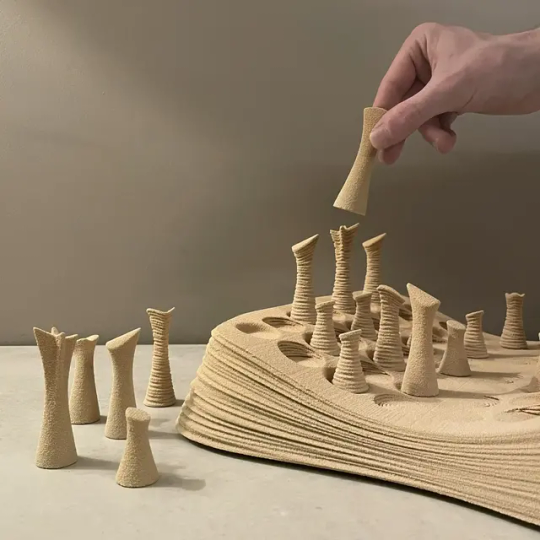

"Dune" Chess by Rory Noble-Turner,
3D Printed Quartz Sand,
380 x 380 x 140mm
#art#design#sculpture#minimal#forms#abstract#chess#chessboard#dune#sand#3d printing#3d#rory noble-turner#quartz sand#organic#desert#landscape
160 notes
·
View notes
Text


forested & spirited
#pitzipart#happy friday y'all i'm going to the organize a bunch of prints i want to hang yippee#sorcerer
392 notes
·
View notes
Text

something about lovestricken heartthrobs that i'm not eloquent enough to put into words
#so the story behind this one is i actually started it back in october and then abandoned it for eight months for no reason.#jrwi#jrwi riptide#jrwi chip#i guess capn widow and niklaus are there but not enough really#avepharts#anyway this is very much inspired by like. those cutesy punk sticker decals i used to find as a kid. gurokawa kind of beat.#also made this with the intent of it being a print#tw gore#tw blood#tw spiders#tw arachnophobia#tw organs#blood cw#body horror#okay that should be alright#oh and just for becky ->#jrwi spoilers
352 notes
·
View notes
Text
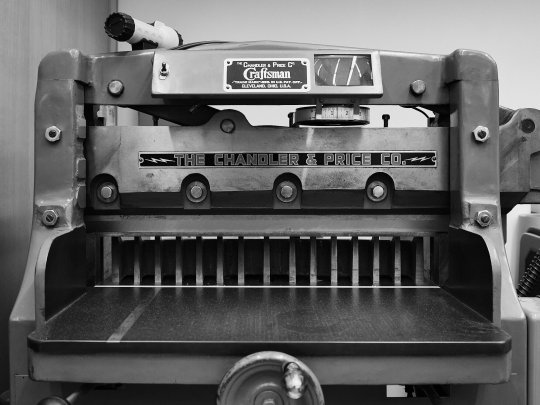
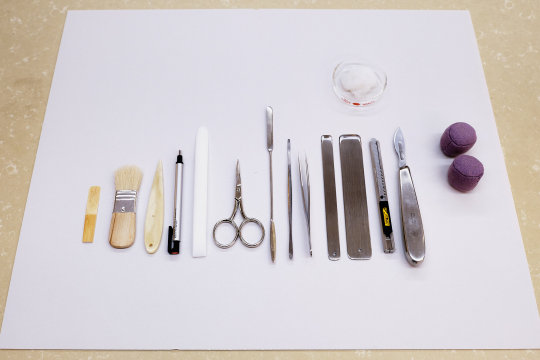
Inside the book conservation lab at the Metropolitan Museum of Art
Photos by Nicholas Calcott / New York Times
#things organized neatly#book making#books#conservation#history#museums#Metropolitan Museum#The Met#NYC#NYTimes#New York#Craftsman#Art#History#Flat lay#knolling#design#creative#graphic art#print
281 notes
·
View notes
Text
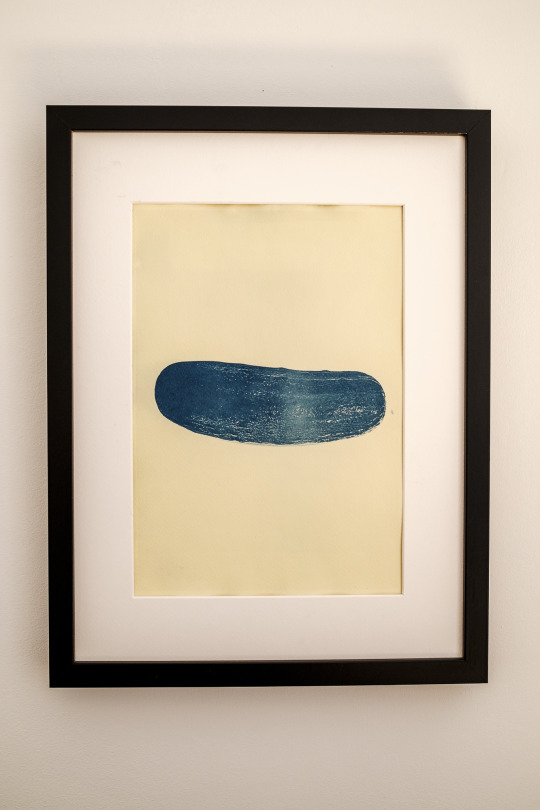

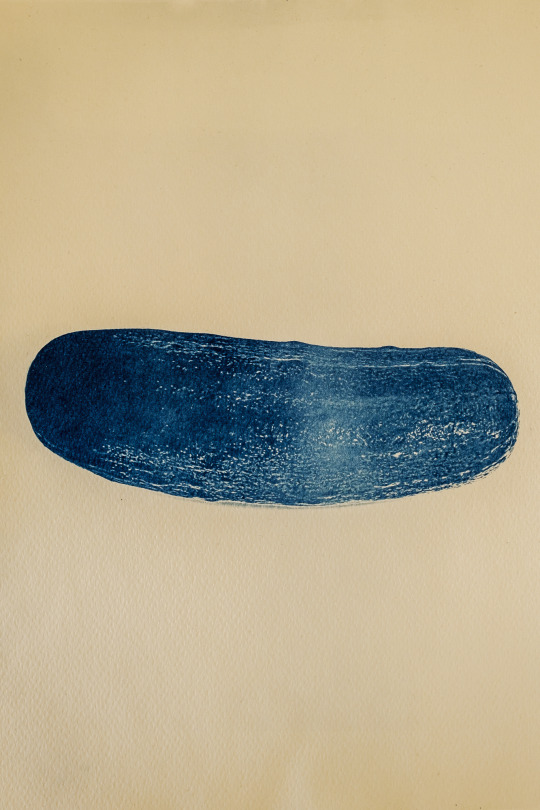
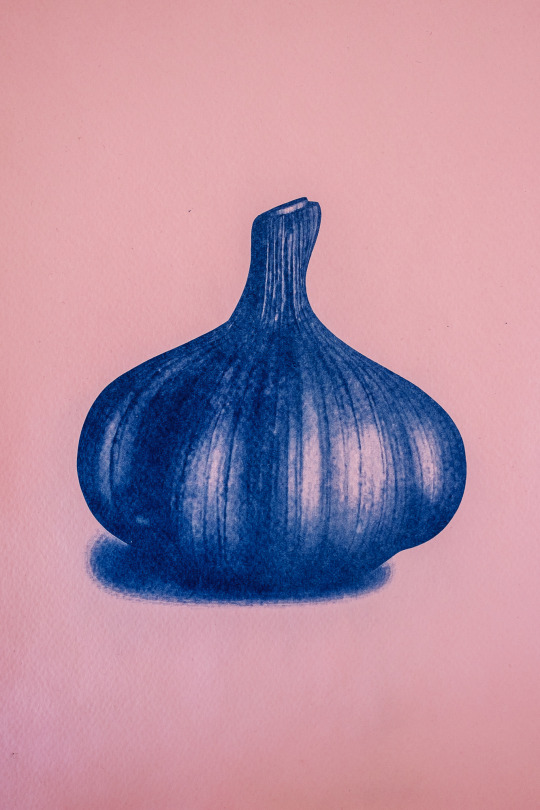
I wanted to celebrate with these two prints that I made, a long history that jewish people, garlic and pickles have. You can purchase these print via my Etsy shop.
And here's the history:
Already in ancient times, garlic was a central part of celebrating Shabbat. The Talmud devotes several passages to talking about garlic, explaining that it is a key part of Shabbat meals. “With what does one delight in the day of Shabbat?” the Talmud asks, recording an answer provided by Rav Yehuda, son of Rav Shmuel bar Sheilat, who recalled the words of his teacher Rav: “With a dish of beetroot, and a large fish, and heads of garlic” (TalmudShabbat 11b). Elsewhere, the Talmud refers to Jews who celebrate Shabbat as “garlic eaters,” so closely identified was Shabbat dinner and lunch with this fragrant vegetable. (Talmud Nedarim 31a)
Even later on, in the medieval times, the conncetion between jews and garlic was quite close. In fact, it helped the community to survive! In Istanbul, when Jews avoided the plague during a terrible epidemic, it was said that the virus did not penetrate the Jewish area because of the smell of garlic. Jews hung bulbs of garlic outside their doors to ward off the plague as a talisman and sign of good luck. The food historian Gil Marks adds: “Historically, the addition of garlic was among the typical Jewish touches that enhanced local dishes. In many cultures, the presence of garlic marked a dish as Jewish.”
In Germany, in the towns of Speyer, Worms and Mainz were home to large, vibrant Jewish communities. A popular acronym for these areas took the first letter from each town – S, W (which is written with a double “U” sound in Hebrew) and M – echoed the Hebrew word for garlic, shoom. The area was known as Kehillas Shoom (or SchUM) – the community of “Shum”, or garlic in Hebrew.
So identified were German Jews with garlic that some anti-Semitic images persist from the Middle Ages and Renaissance, depicting Jews holding or posing with bulbs of garlic.
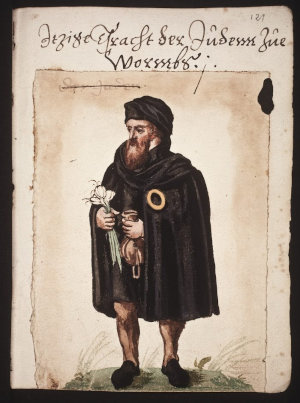
But jews and pickles go back for a long time too. Eastern European Jews brought their pickle-making traditions to America in the late 19th and early 20th centuries and made it famous there. Pickled cucumbers were an important part of their diet due to the need for preserving food in harsh climates in Eastern Europe, where was a common practice to collect and preserve pickles in order to survive winter. Everything could be pickled, from lemons to carrots, with varying degrees of culinary success.
Some took the cucumber, a cheap, accessible vegetable, preserved it in the spring to make them last through the winter and feasted on it throughout the year. Some of those people were Jews and thus the Jewish love affair with pickling began, as a way of keeping vegetables hygienic and healthy.
Fermantation itself as has a biblical orgin in various places. Perhaps the best-known early reference to fermented food is the Passover story in Exodus (12:39): When the Jews were "thrust out of Egypt, and could not tarry," their dough could not rise (through fermentation). We know this unleavened bread as matzo. But when they left Egypt, after some time, their longing for these goods came up: "We remember the fish which we were wont to eat in Egypt for nought; the cucumbers, and the melons, and the leeks, and the onions, and the garlic” It’s likely that the cucumbers mentioned by our Jewish forebears were pickled in some way. Ancient cucumbers tasted extremely bitter and the ancient Egyptians “cooked” their cucumbers by lightly fermenting them. The resulting pickled vegetables were slightly alcoholic, and were seemingly eaten for their mind-altering properties.
#jewish#jumblr#print#pickle#garlic#organic#food#fermentation#pickling#tradition#eastern europe#delicacy#deli#garlics#onions#cucumber#pickles#cyanotype#judaism#jewish history#food history#etsy#sale#art#cyanotype print#sunprint#original#decoration
176 notes
·
View notes
Text

Decided to take Integra's drawing and Alucard's and place them together on the same illust. I liked the result, but had to mess with Integra's colors a little so they would match Alucard's.
Also, there's a little color difference from this file to the final file, because this one is ArtShielded 🖤
I made this one available on my Redbubble shop as Prints, Stickers... And a throw pillow, 'cause I saw the mock up and it looks kinda cool HAHAHA hope it is and hope it is good quality too, or I'm sending Alucard after the people in charge
Also in my head Alucard is freakishly tall and nothing is gonna change that, even if Integra is tall too :')
#art#fanart#hellsing#alucard#integra#integra hellsing#sir integra#alucard fanart#integra fanart#hellsing ultimate#hellsing alucard#my art#illustration#character illustration#stickers#art print#sticker shop#throw pillow#polaris croquis#phew quite a few tags on this one#but I'm on a mission to keep things organized here!!#redbubble
220 notes
·
View notes
Text


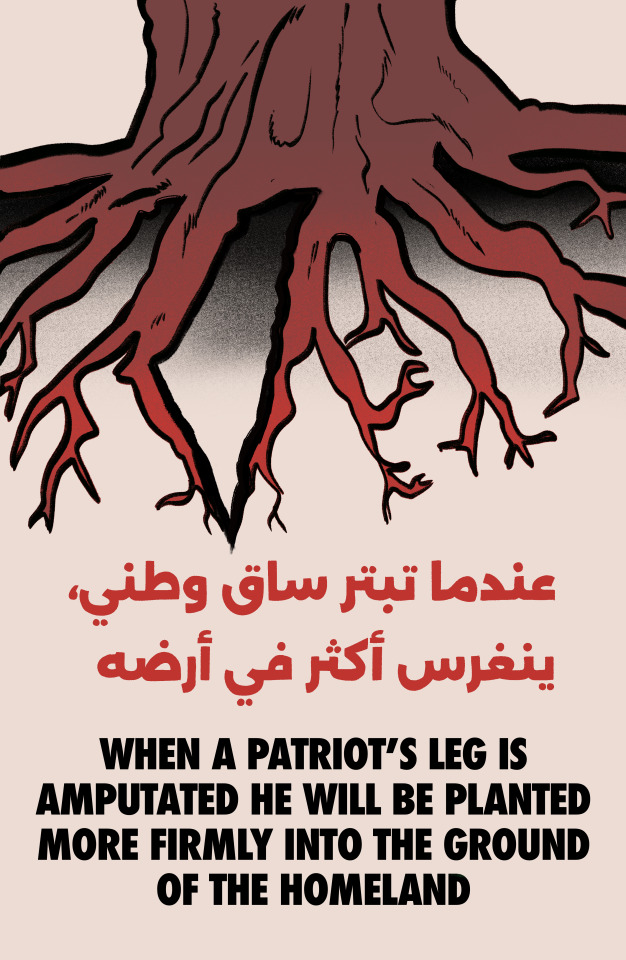
#design for palestine#.png#been scrolling through palarchive and I wanted to make some posters tbh.#I have like 70 bucks worth of printing credits left at my college umm next week i will see if i can print out some more stuff#its really funy though the chancellor sent out an email saying not to use school related accounts to organize and promote terrorism#like okayyy
426 notes
·
View notes
Text
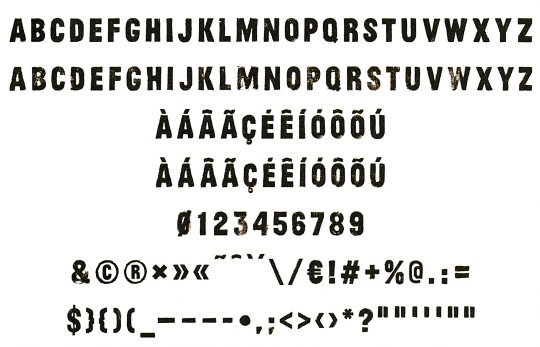
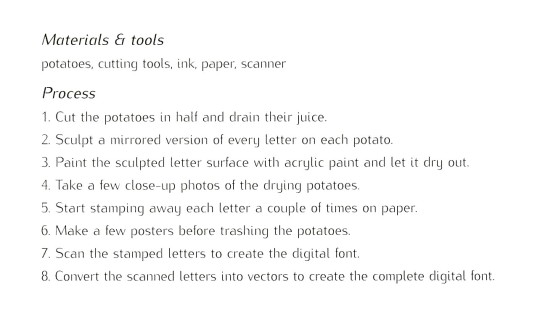
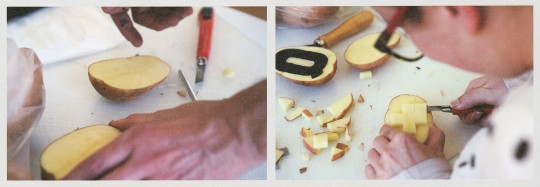
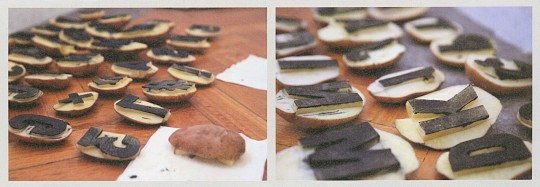
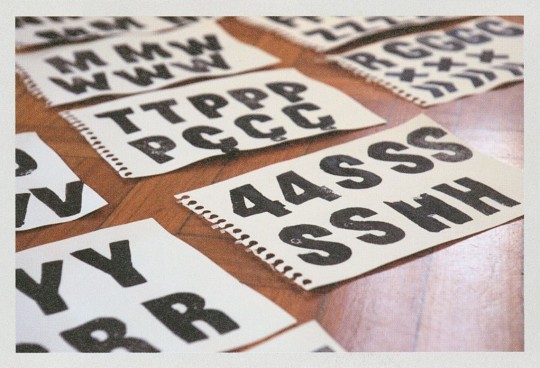

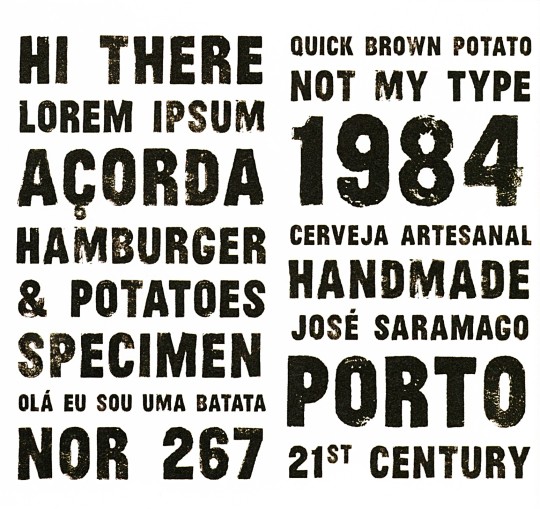
Typography Tuesday
Portuguese designer Ivan Alves created the Wild Potato font for Nor267 design studio in Porto, Portugal. Although used to working digitally, the designers for this project got off their computer screens and approached their work in a different way, creating a typeface made from handcrafted potato stamps. After three days of cutting, drying, painting, stamping, and drying again, the alphabet was finally completed. Then all the letters were scanned and turned into the digital font known today as Wild Potato.
These images are from The Making of Artistic Typefaces by 50 international designers published in 2016 by SendPoints Publishing in Hong Kong.
View more designs from The Making of Artistic Typefaces.
View more Typography Tuesday posts.
#Typography Tuesday#typetuesday#fonts#organic typography#The Making of Artistic Typefaces#SendPoints Publishing#type desingers#type designs#Ivan Alves#Wild Potato type#Nor267#potato prints#potato type
73 notes
·
View notes
Text
Lung diseases kill millions of people around the world each year. Treatment options are limited, and animal models for studying these illnesses and experimental medications are inadequate. Now, writing in ACS Applied Bio Materials, researchers describe their success in creating a mucus-based bioink for 3D printing lung tissue. This advancement could one day help study and treat chronic lung conditions. While some people with lung diseases receive transplants, donor organs remain in short supply. As an alternative, medications and other treatments can be used to manage symptoms, but no cure is available for disorders such as chronic obstructive pulmonary disease and cystic fibrosis. Researchers continue to seek better medications, often relying on testing in rodents. But these animal models may only partially capture the complexities of pulmonary diseases in humans, and they might not accurately predict the safety and efficacy of new drugs.
Continue Reading.
92 notes
·
View notes
Photo

i’m here to appease the moira o’deorain fans
#my art#overwatch#moira#moira o'deorain#yes i'm a homosexual!!!#she's so sexy i don't care what everyone else says#cute bnnuy socks#she's a 10 but she runs a terrorist organization#she's an 11 now#if blizzard ever comes out of the woodwork to say that moira is straight i won't buy that shit#might have this one as a print for my store re-opening too just for the moira fans#she's the lesbian#for the lesbians
772 notes
·
View notes
Text
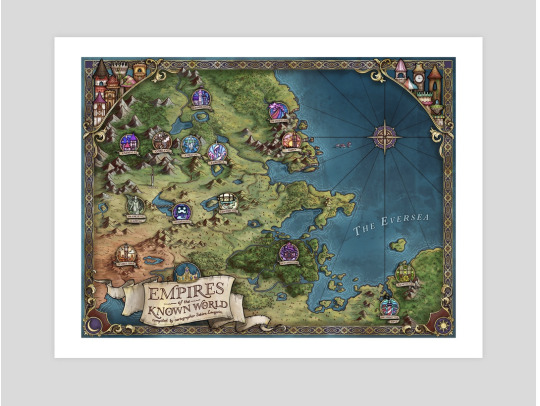


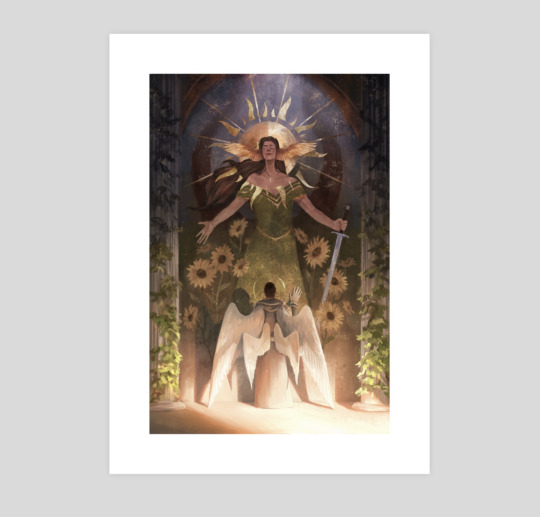
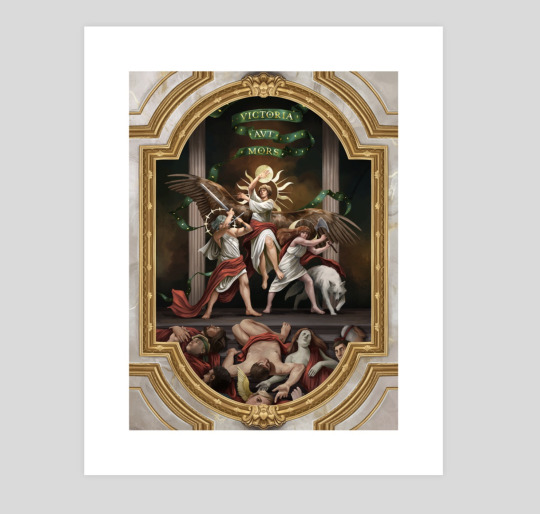
If you’re looking for some cool art to put up, everything in my print shop is on sale through Sunday! ✨✨
#empires smp#saint pearl#critical role#over the garden wall#life series#hooray prints!#since there’s a link I doubt this will show up in tags but I value blog organization lol#actually I have like a dozen INPRNT prints that are just in storage rn! I’ve lived in my new place nearly a month and I they’re not up yet#okay reminder to myself to actually take some time to decorate#anyway yes! prints on sale! hooray
243 notes
·
View notes
Text
Hey, would anyone be interested in some fish serigraphy prints I made a couple years back in uni? I made them in sets so there's a few complete sets that come with a little box, and then i have some individual ones that cant be made into a set (both repeats and b-grades)
There's twelve designs total. Ten of them are of real irl fish and two of them are based on the monster concepts I developed for my comic DEEP
Ive had them sitting around for a while and i just keep forgetting to post about them constantly haha
They'd be 110eur per complete set (12 prints plus a handcut box thing) and 10eur per individual print (plus shipping for either case)




#id have to organize them but i think i have eight sets with box to sell at least. and some bgrade boxes too#id make a more cohesive post about it if theres interest#windyart#thunderclap#a couple of the prints are on different paper colors but most are black#since a lot of this was experimenting some stuff is different
282 notes
·
View notes
Text
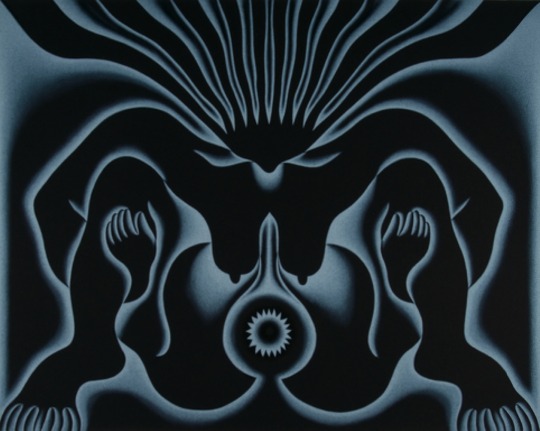
Judy Chicago (American, b. 1939)
The Crowning, 2009
Lithograph
#Judy Chicago#upl#va#art#prints#lithograph#serigraph#i can feel my internal reproductive organs just seeing this#it's like kinda getting cervix contractions#but i feel my uterus as well#never been pregnant so idk how it feels like but i always feel like this even when someone is talking about giving birth or see a pic#it's kinda intense and definitely unpleasant#so i'm wondering if it happens to other women as well
296 notes
·
View notes
Text
Operational Security is extremely important to protect your digital privacy
Encryption, passwords, multiple burner devices, a VPN that make tracking your IP address more difficult, for example
I don't think Luigi Mangione shot anyone, but because he used social media like Good reads, Facebook, Reddit, untrustworthy Internet service providers, etc those social media websites either handed over his information freely or he was finked on by people who knew his online identity
Obviously I'm not advocating for terrorism, anarchy, sabatuers, or wha eva. I just don't want my tax dollars to be wasted because you got yourself locked up doing something stupid
This should seem obvious, but don't trust no body police have gone undercover in order to trick protesters into breaking the law
I bet you've never even heard about Ruby Ridge
#deny defend depose#delay deny depose#Ddd#3d printing#ghost guns#2nd amendment#martial law#civil unrest#luigi mangione#united healthcare#Heath insurance#Opsec#operational security#brian thompson#uhc shooter#protesting#community organizing#brianna boston
27 notes
·
View notes
Text
liberals wanting to get involved in activism and/or become more radical:
read this
it's short, 8 pages. I think it's a good bridge from liberalism to more radical politics. it was written during trump's last presidency and is very relevant now.
#antifascism#antifascist action#antifa#anarchism#anarchist#going to print these for whatever is organized in response to trump
34 notes
·
View notes